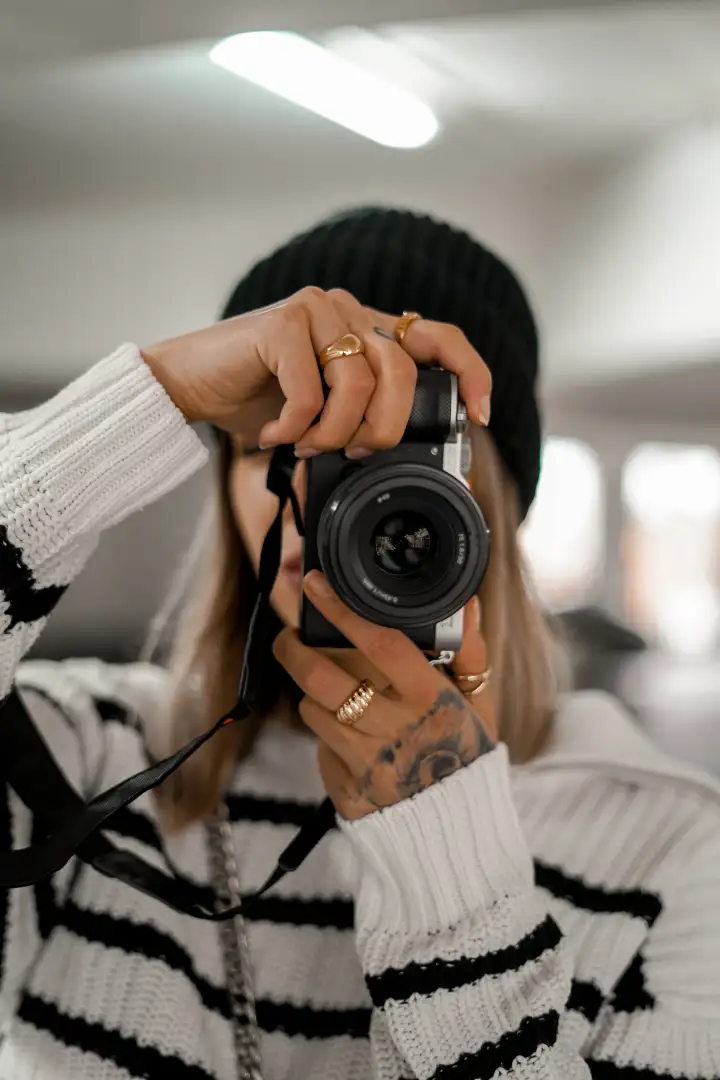F. Scott Fitzgerald famously wrote:
“The test of a first-rate intelligence is the ability to hold two opposing ideas in mind at the same time and still retain the ability to function.”
What does this have to do with digital advertising? If you'll allow me, I'll appropriate his phrase: "The test of a first-rate marketing strategy is to hold more than two advertising channels in mind and still retain enough reach to function."
However, keeping two channels in mind with sufficient reach may be harder than ever. With the digital advertising giants Google and Meta announcing drops in revenue and reductions in digital ad spend, a bullish run may be coming to an end.
Beyond that, there are legal cases starting now that will have huge implications for the internet as we know it. In particular, there is Gonzalez vs Google in the United States that calls into question just how far the protection of Section 230 of the Communications Decency Act goes.
What is Section 230 of the Communications Decency Act? It reads:
“No provider or user of an interactive computer service shall be treated as the publisher or speaker of any information provided by another information content provider.”
This is the backbone of the internet as we know it - platforms like Facebook, Instagram, YouTube and more are not legally liable for anything that their users post.
However, what about algorithms? These dictate what we see on the sites we visit and in turn dictate who and what gets the most views, reach, and engagement.
Policy makers have a tough question ahead of them: are companies immune from legal ramifications when their algorithms promote controversial content created by another user? Or are these algorithms, and the content promoted, outside the jurisdiction of Section 230? So far, Section 230 has protected companies and their algorithms.
Finally, the age of AI-generated content seems close at hand. Not everyone is excited about the breakthrough, though - content creators are left feeling upset and unsure of their future, especially those whose content was used to train these models in the first place.
TechCrunch summed it up well when Shutterstock announced that they were bringing AI-generated content to their platform:
"Shutterstock says contributors will be 'compensated' for the role their content played in the development of this technology — which raises plenty of questions, such as how will contributors be identified and how much will they be paid; how will their contribution be quantified exactly; and how will they know if they’re getting fair payment for their contribution or not? Who will audit these compensation frameworks? And, er, where was the consent from artists to becoming contributors to these AI systems in the first place?"
With all this, you have to wonder what lies in store for digital advertising. But out of chaos comes opportunity.
During a downturn, marketing will give you an essential lead over competitors who stop their efforts. When the market recovers, you’ll have a solid base of clients and material to leverage while your competitors scramble to make up the difference. After all, the best time to fish is when there is no one else on the lake.
So what opportunities await those brave enough to venture into the unknown?
.jpeg?width=800&height=1137&name=annika%20seppala%20synlab%20campaign%20(1).jpeg)
Photo by @puuteripilvi
Less competition
As Meta reports dwindling revenues, Google faces a landmark court case, and we all struggle to make sense of Twitter's new leadership, it's natural to consider pausing your marketing efforts. But, with your competitors also taking a break, doesn’t that just open up more room for your brand to shine, your messages to find their audience, and your products their market?
Isn’t now not the time to stop telling people about your product - but instead the time to shout it from every digital rooftop?
The benefits aren’t just limited to having less elbow-room, but also how much you spend. The average CPC across Meta ads has trended downwards since peaking in November ‘21, with no signs of recovering yet. In fact, this trend is common across most ad platforms. And I’m sure I don’t need to explain the benefit of paying less for the same number of clicks.
However, what is even better than your competitors slowing down their advertising is that typically advertising and content creation go hand-in-hand. When they cut advertising and content production, they’ll need to reuse a lot of old content. And when there is a lack of fresh content, no matter how good it is, engagement eventually wanes.
I don’t know if you have noticed, but a certain well known electric toothbrush brand has been using the same TV advert since before the pandemic. It makes me change the channel immediately because I’m so sick of it. But they clearly can’t afford a new production, to buy new music rights, or improve their ad in any way. And instead of convincing me to buy their product, their ad leaves a bad taste in my mouth.
Showing people the same ad over and over again causes ad fatigue, and it negatively affects your conversion rates and raises your ad costs. Simulmedia ran a test on how frequency affected conversions and found:
- Seeing an ad for the first time made viewers 5.7% more prone to purchase than not seeing it at all
- People who saw the ad 6-10 times were 4.1% less likely to buy a product than those who saw the ad 2-5 times
- Those who saw the ad 11+ times were 4.2% less likely to buy than those who saw it 6-10 times
Rather than save some pennies and reuse old and non-current content, invest in eye-catching content that will stand out and show you as a bold innovator. Better yet, get your customers to generate content themselves, and use that. The magic of user-generated content will do the hard work for you.
.jpeg?width=700&height=1050&name=nea%20aho%20deet%20care%20plus%20campaign%20(1).jpeg)
Photo by @neahenriiikka
More creativity
Limitations are essential to our creativity. When we have infinite possibilities ahead of us, it's nigh impossible to do anything - we get choice overload. The most creative solutions come from when we have severe limits.
Budgets are getting slim? Now is the time to get creative with the money you have. You can promote an old campaign with a new message, repurpose content from influencer campaigns in your advertisements, work with your existing clients to boost referrals and word-of-mouth marketing... there is always a path forward, after all.
The platforms we rely on for our campaigns are also getting creative, too (or they should be). They’ve been running hot for a long time, no one can deny that. But now they need to discover new fuel for their growth. And that means innovation - new products, iterations, improvements.
Look at Meta - they’re rolling out more and more creator-focused features to help them compete with TikTok. And when creators have more features, brands also gain more opportunities for partnerships and collaborations.
In the meantime, we've seen platforms like TikTok roll out an array of advertising products, like Spark Ads. New incumbents to the fray may consider options to entice brands and businesses to their platform, like the newest contestant to the social media game, BeReal.
After all, invention comes from necessity. As digital advertising trends downward, you can bet your ad dollars that there will be new products and opportunities en route.
New channels
Consider your current advertising and marketing mix. What channels are working well for you? What channels have you wanted to try, but haven't yet? When costs and competition go down, so does the barrier to entry - now is the time to test.
For example, content generated during your influencer campaigns are perfect creative for any sort of digital advertising. Why? You know which message resonates with your audience. Now's the perfect time to evaluate your previous campaigns and extend their lifespan!
As well, when there are changes in the market, that opens the door for everyone's favourite word: disruption. New players may open up channels for advertisements, which means access to a whole new audience.
Consider BeReal, the latest social app to make a splash. While they've been adamant about their "no ads" stance at the time of writing, some companies have conducted their own guerilla marketing campaigns to some success. I believe that in time, the founders will BeReally open to advertisements on their platform - especially if they want to stay relevant.
.jpeg?width=700&height=933&name=tiia%20suomalainen%20froosh%20campaign%20(1).jpeg)
Photo by @tiiastudies
Outro
When budgets get tighter, it's natural to look to marketing first (and not with a kind eye).
However, this is the moment when companies around the world are doing the same thing, and consumers are tightening their own budgets. But it's not that they are spending less money. They're still spending money on the right things. And what better channel than marketing to convince customers that your product is exactly the right thing?
It's intimidating to go right when everyone is going left. But oftentimes the path less taken holds the greatest bounty.
We can see these trends as a death knell for the digital advertising industry, or see them as a new beginning. And as with any new beginning, there is ripe opportunity.
The only question is, will you be the one to reap the harvest?



.png?width=520&name=B22%20Author%20profiles%20(4).png)

.jpg?)
